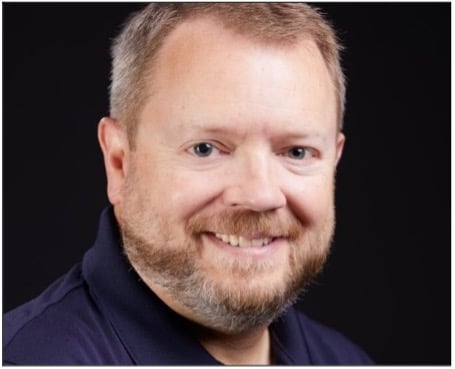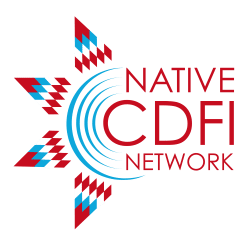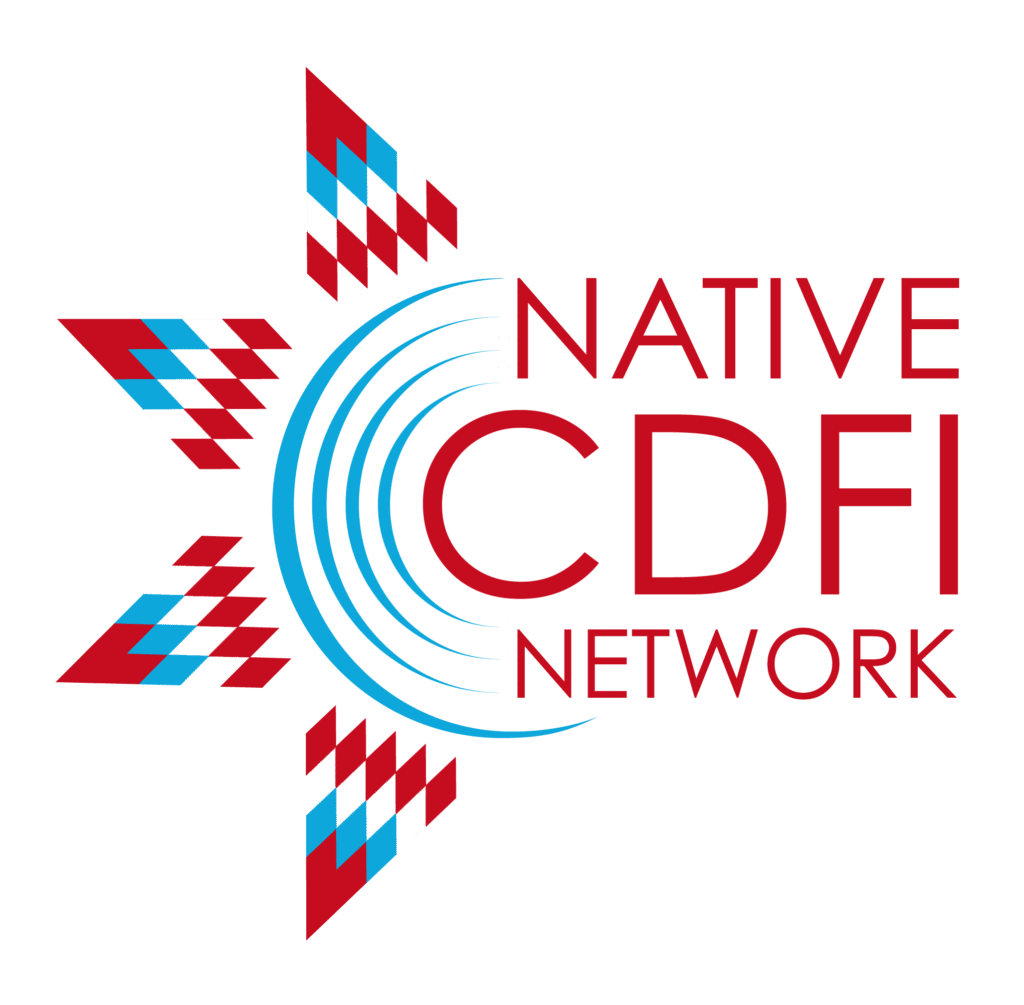The Native CDFI Network (NCN) developed the “Native CDFIs: Difference Makers for Indian Country” interview series to cast a much-needed spotlight on the many positive benefits that Native community development financial institutions (CDFIs) create for tribal communities and the leaders who help make Native CDFIs the transformational success stories they are.

In this latest edition of “Difference Makers,” NCN sits down with Russ Seagle, who has served since 2013 as CEO of The Sequoyah Fund, Inc., a Native CDFI serving the Eastern Band of Cherokee Indians and surrounding rural communities in Western North Carolina. The Sequoyah Fund provides small business start-up and expansion capital, housing rehab loans, credit builder loans, and training and consulting services to small businesses, nonprofits, and tribal departments.
Prior to joining The Sequoyah Fund, Russ owned several businesses. He has been a small business consultant, trainer, and professional speaker since 1999.
In this wide-ranging conversation with NCN, Russ provides an overview of Sequoyah Fund’s comprehensive development of a small business sector across the Eastern Band of Cherokee community, and how the CDFI helped its clients withstand and recover from the COVID-19 pandemic.
NCN: Let’s start with you: Why do you do what you do? How did you come to lead Sequoyah Fund?
Seagle: I was doing some programming with the local community college on behalf of Sequoyah Fund. One day my predecessor said, “Wouldn’t it just be easier if you were working for us?” I thought she was kidding and said, “Well, make me an offer I can’t refuse.” At our next meeting, she made me an offer that was pretty unrefusable. I don’t know that anybody in their childhood says, “I want to grow up to lead a CDFI someday,” but we know what we’re good at. We know when we’re good at helping people and we know when we find a good match for that skill set. I did. It’s been a great place to surround myself with people as committed to helping small businesses grow as I am.
NCN: As you know, there are roughly 70 federally certified Native CDFIs across the country, and many more “emerging” Native CDFIs following in their footsteps. From your perspective, why are Native CDFIs necessary, and what fundamental role do they play?
Seagle: All anybody needs to do is look around at Native communities. You don’t see banks popping up or traditional capital flowing into these areas. Native CDFIs fill a vital role. I think about that John Muir quote, “The mountains are calling and I must go.” Well, here in Cherokee, the mountains are calling, and there’s a sense of place that holds us here, draws people back here. People who stay or move back to Cherokee want the same opportunities they otherwise would have to go elsewhere to find. CDFIs are the fuel for that. We make it possible for people to stay near and take care of their families, build businesses, do what they love, and improve their own financial conditions and those of the people around them.
“We make it possible for people to stay near and take care of their families, build businesses, do what they love, and improve their own financial conditions and those of the people around them.”
NCN: What do policymakers and the general public need to understand about Native CDFIs and the difference they make?
Seagle: I think policymakers in general don’t fully understand what value we bring to the community. We’re a very small fish in a very big pond when it comes to pumping government money into communities. We as an industry were not supposed to last forever. We were just supposed to be the mechanism that brings capital into these communities and then attracts banks and other capital. But what we do works really, really well, and that’s why we’re still around.
If I had a roomful of policymakers, I would tell them that in addition to the value we bring our communities, we have to work doubly hard to bring that value. Other programs that are certified by the government don’t have to write a grant to be able to do what they do. We’re certified by the U.S. Treasury. We go through an arduous annual recertification process. We also go through a very rigorous reporting process every year. On top of that, we have to write a grant to ask for the money. Treasury and the CDFI Fund should consider moving Native CDFIs to a block-grant approach and take the grant-writing process off our shoulders. If they don’t like the way we’re reporting, they can always claw that money back or have other repercussions for us. But to make us go through that expensive and time-consuming process with very small, understaffed organizations – where a lot of times we’re having to farm that work out because we don’t have that [grant-writing] expertise – and then have to turn around and report on that same money, it seems like a double whammy. Small organizations have a hard time getting past that. It would be so much easier to be able to focus on the work if we knew every year that certified organizations have certain assets, that are going to get X amount of money. “These are the different ways you can spend that money. Now, go do good things and then report back to us.” It would be cheaper for the federal government as well. They don’t have to go through that process of evaluating the grant. You have a lot of great organizations out there worthy of the money that don’t get the money. Often, the grants they write just don’t pass muster. Well, that hurts that community. You can say, “Well, they should have stepped up their game.” But is that really the business we’re in? We’re not in the grant-writing business. We’re in the community capital business.

Seagle: We have tracked business growth, employment growth, and we can tell that we’ve helped directly or indirectly create close to 1,900 jobs over the years. Every day, we have people who come in and say, “I want to be able to employ my family. I want to be able to employ my people. I want to be able to benefit my community.” For them, it is not so much about wanting to maximize profits. They’re not after world domination. They want to improve their financial condition and that of people around them. We can drive down the road and see businesses that took advantage of an old facade grant program that we ran in our early days to help spruce up storefronts. We see businesses that have new signage, new parking lots. They’ve done great things with the interior of their buildings. They’re reaching new markets. Just in the last year or two, there’s been an explosion of food trucks because Cherokee has done a good job making places for those food trucks without regulating them out of existence like a lot of municipalities have. We drive down the road and say, “Okay, we funded that one and that one and that one.” Just very visible anecdotal signs. We’ve tracked the numbers, but really the proof is in driving through the community and seeing that we’ve got a shopping center and every business in the shopping center has our fingerprints on it because they came to us at some point for capital, training, or consultation. We’ve got one business in there that has never taken a dime of loan money from us, but they call us on a regular basis to ask for advice and counsel, and that’s every bit as important to our community as the money that we deploy.
NCN: How else does The Sequoyah Fund support the Eastern Band of Cherokee community?
Seagle: In lending money to small businesses, we found there were other opportunities to assist the community. One is that tribal members’ housing was pretty deficient. In 2009, we got $470,000 from the CDFI Fund to start a small housing rehab loan program for enrolled members. We revolved that money over three times, and then got some more CDFI Fund funding to do that. The number of tribal members’ houses that have been improved is phenomenal. We’ve got people out there who joke that we ought to pay them a commission because they’re sending friends, family, and neighbors to us for loans. We lend up to $35,000 at four percent over five years, which is a great deal.
Along the way, we found that transportation was an issue. If you don’t have decent transportation, it’s hard to start a small business. So recently we started an auto lending program for used cars. In the process, we never thought about refinancing cars for people, but we started getting people coming in and saying, “You know, I’m paying 29 percent interest on my car loan. I will never get out from under this car.” And we said, “We’ve got to do this.” We started refinancing some of those higher interest rate loans where, again, we’re putting people in a better condition.
We have a small credit builder loan program. Folks come in and take a course and meet with our credit counselor on a regular basis. They get a small loan that we help them parse out to make sure that bills get paid that will have the highest impact on their credit score. We didn’t spend a lot of money on that program, but we saw huge results in people’s credit scores and in their financial condition.
We also have educational programs. We focus heavily on youth entrepreneurship. We developed our own proprietary entrepreneurship education curriculum, which is now in 43 states and 12 foreign countries. Kids come to our summer camps or learn about entrepreneurship at school through our programs, and they go home and talk to their parents. Before you know it, their parents are starting to see self-employment as a career option. So rather than going out and getting a job, they can go out and create a job.

Indigenous Boutique & Spa, a Sequoyah Fund client. (Courtesy: The Sequoyah Fund, Inc.)
NCN: As you’ve shared, Sequoyah Fund supports tribal members in various ways. Can you share with us an inspiring success story of an individual client you’ve worked with?
Seagle: I’d love to tell you about John. John has a fish hatchery up on a mountainside with stair-stepped fish runs. The cost of food for those trout was getting high. John had this great idea. He invented a feeding system – a solar array that powered a series of bug catchers mounted above the fish runs. He went to USDA for help and USDA said it could provide part of the funds, but it couldn’t cover the whole thing. We jumped in and used that USDA grant as the equity for his loan and got him a huge solar array. On a timer, every now and then you hear a beep, and those fish feeders open and dump the dead bug carcasses into the water. The fish love it. So John was able to grow his business by cutting his cost of food to basically zero, and the excess solar electricity powers about 50 percent of his electrical needs for his residence.
NCN: NCN recently published a report documenting the extraordinary difference Native CDFIs have made in helping Indian Country recover from the COVID-19 pandemic. How has The Sequoyah Fund helped its community through the pandemic?
Seagle: We started by figuring out how to help the people who were already part of our portfolio to survive. We came up with a traffic light model with red, green, and yellow. The red businesses were probably in deep financial trouble before the pandemic, and this was just enough to push them over the edge. We decided not to pursue those. We said, “We’re going to leave you alone. If you can pay, great, if you can’t, we understand. We’ll have a hard conversation when all this is over. But right now, we’re not going to take any action against you.” That gave them a lot of relief. The businesses in the green – primarily service and tech businesses – were unaffected by COVID. But in that bell curve, there were a lot of businesses in the yellow, so we created some programming for those businesses. They kept telling us, “We need more customers. Our businesses closed or our businesses are limited in terms of how many people we can let in.” We created a program called TACTIX to help them get more customers. It’s an advanced online accelerator focusing on digital marketing, online sales, and social media marketing. We’re rolling this out to other Native CDFIs this year, and the results we’re getting from businesses has just been remarkable.
The biggest thing we did during COVID didn’t have anything to do with our normal operations. During the CARES Act and the American Rescue Plan Act rollouts, the tribe got a big bucket of money for small businesses and said, “We don’t know what to do with this.” So tribal council passed a resolution to give this money to Sequoyah Fund and have it pump the funding into the community. Within 48 hours, we created an online application system. We did a training session for our business community. There were many businesses that just needed a small infusion of cash. Fill out the application, walk in the door, we’re going to hand you a $5,000 check. We’re also going to give you $5,000 if you’ll take TACTIX because we know it works. We had facility grants to help people bring their facilities up to what customers were demanding. We had a new market grant, an innovation grant. The tribe trusted us to do this work, to deploy these funds quickly and in a very efficient way. The results have been huge and very visible.
NCN: From your perspective, what do Native CDFIs like Sequoyah Fund need to realize their full potential and maximize their impact?
Seagle: Ultimately, we need people who care about their community. At Sequoyah Fund, our staff are true believers in what we do. Native CDFIs have to be able to attract those people. We don’t compete with small nonprofits for talent. We compete with banks, financial institutions, and the tribe. If somebody graduates with an accounting degree, they can land a secure job with the tribe. I might need that person, so I’ve got to offer pay and work environment just as attractive with sound management practices and good leadership. If we get the right people on the bus and keep them happy, the rest will take care of itself. Grant funders like to give us money for programs, but they don’t like to give us money for the people who see those programs through. I would love to see more unrestricted dollars for staffing because the better our staff, the better our results.
To learn more about The Sequoyah Fund, please click here.

